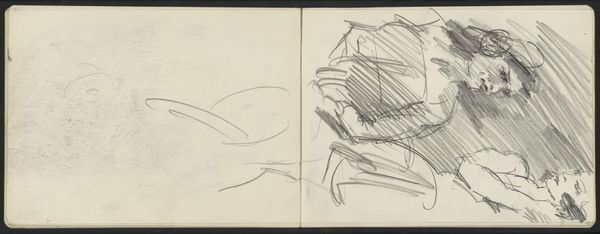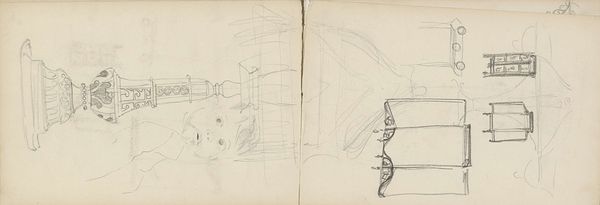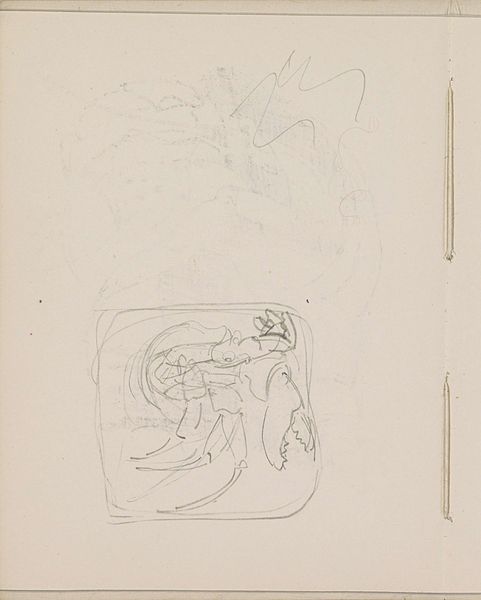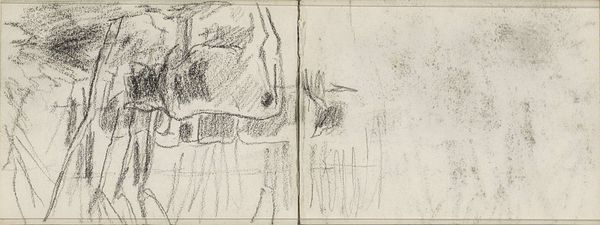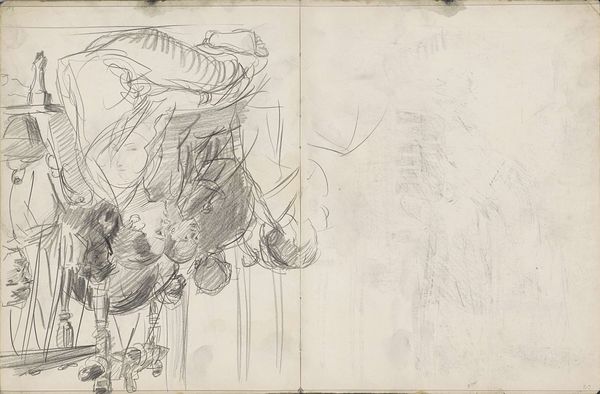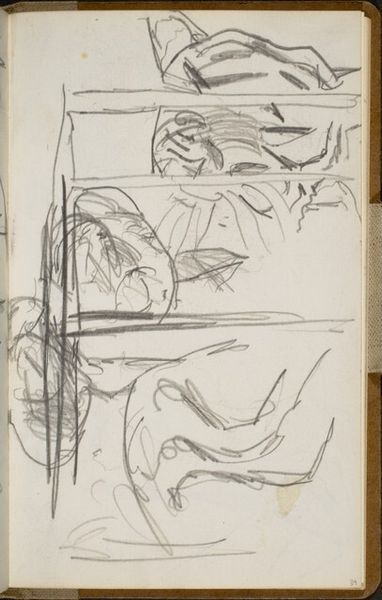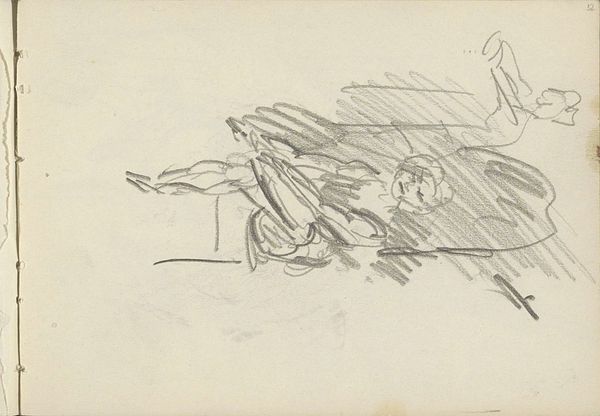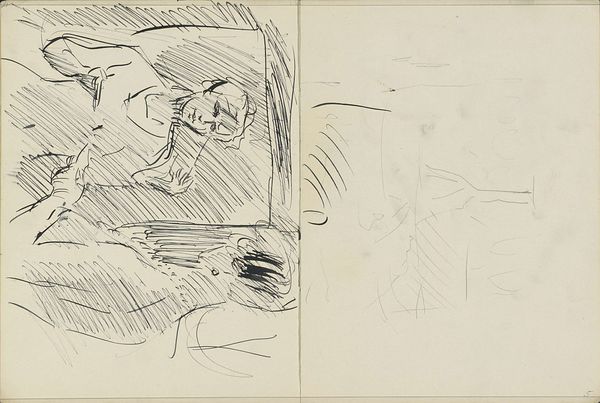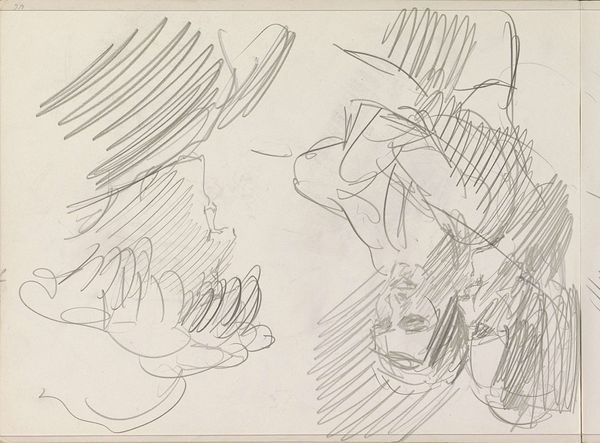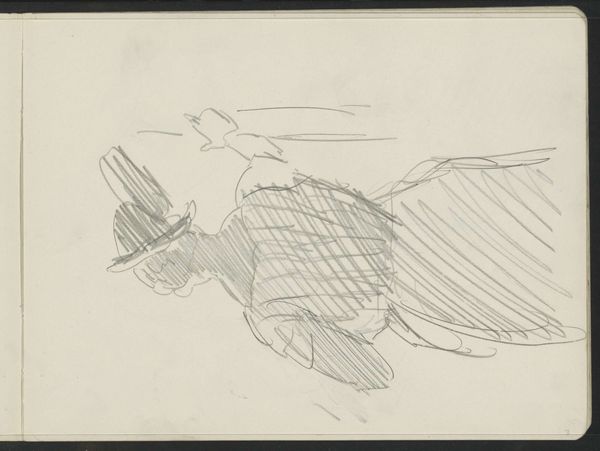
drawing, paper, pencil
#
drawing
#
light pencil work
#
pen sketch
#
figuration
#
paper
#
personal sketchbook
#
idea generation sketch
#
ink drawing experimentation
#
sketch
#
pen-ink sketch
#
pencil
#
pen work
#
sketchbook drawing
#
academic-art
#
sketchbook art
#
initial sketch
Copyright: Rijks Museum: Open Domain
Curator: This is a pencil and ink drawing on paper entitled "Knielende Christus voor een engel" – "Kneeling Christ before an Angel" – by Antoon Derkinderen, likely created sometime between 1869 and 1925. My immediate reaction is one of intimacy. It feels like glimpsing a deeply private moment. Editor: Intimacy is definitely present. The rapid, almost frantic quality of the linework suggests the artist capturing a fleeting thought or impression. You can almost feel the pencil moving across the page. It feels like raw work, like a study of the idea. Curator: I agree, and I see in the motif, an artistic shorthand to a wider tradition in religious imagery, this gesture of kneeling represents humility, supplication and repentance before divine will. Angels frequently come to bridge heaven and earth, communicating guidance and solace, suggesting a divine intervention into the human realm. Editor: Absolutely. And thinking materially, the use of pencil and paper is significant here. It democratizes the process. Derkinderen isn't using expensive paints or precious metals. It suggests the immediacy and accessibility of this spiritual connection. This medium lowers the bar for anyone exploring deep human longings. Curator: And this connects with a collective cultural yearning. Through art historical interpretation we see reflections of humanity's quest to find solace and guidance in a complex existence through shared religious and mythic symbolism. The imagery resonates. Editor: Right. This isn't about celebrating divine splendor, it’s an open meditation, accessible, portable, replicable, it gives the scene even more humanity. It removes grandeur. We should not forget to observe it as an object born from physical means: the graphite mined, the wood milled for the pencil itself, the fibers processed to create the paper...all things connecting artist, labor, and ultimately the viewer. Curator: The image becomes a conduit then, not only for sacred meaning, but the mundane actions of labor that support the scene we view and consider precious. The work as a sign of hope, etched on paper and rendered with humble tools. Editor: A humble work created by humble means.
Comments
No comments
Be the first to comment and join the conversation on the ultimate creative platform.
